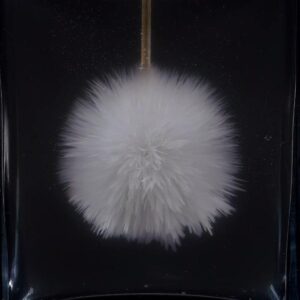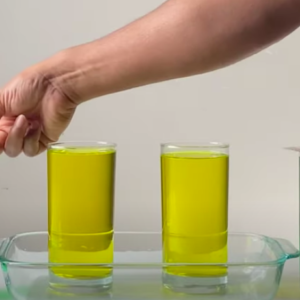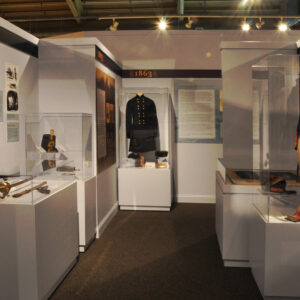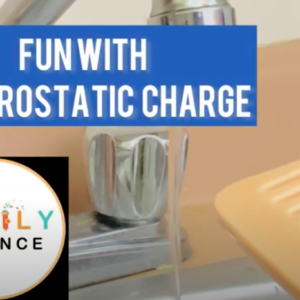Description
Objective
-
Describe how an electron and current electricity are related.
Materials
- Lemons each for each student pair (and other fruit, optional)
1 strip of copper
1 strip of zinc (you can use a galvanised nail, which is coated with zinc)
knife
2 leads of copper wire (each about 20 cm long) both ends of which have alligator clips
A LED bulb having a maximum voltage of 2 volts (the smaller the voltage, the better)
cutting wire
wire cuttersMultimeter or voltmeter, per Class (optional)
Procedures.
-
- To release some of the fluids, forcefully roll the lemon on a counter.
One end of each copper and zinc strip should protrude out as you insert them vertically into the lemon.
Each metal strip should have a wire lead connected (electrode).
Connect one of the wire leads’ free ends to a wire that is connected to the LED.
The remaining free wire on the bulb should be connected to the remaining free end of the wire lead. In case the bulb doesn’t light, don’t be shocked! - Hint: LEDs only work properly when they are connected in the correct orientation. Try changing your course.
Tip: Avoid trying to test your LED by connecting it to a car battery. The LED will be destroyed by a commercial battery since it is too strong.
Check the voltage between the two electrodes using a voltmeter or multimeter. Most likely, it won’t even reach 1 volt! The LED requires roughly 2 volts to be illuminated, thus that is insufficient. Lemons should be grouped together in sets of three or four. The lemons should be wired in series (copper to zinc together) and the ends should be connected to a single bulb. - Verify the voltage between the free wires at the ends of the series using a voltmeter.
Tip for teachers: The voltage will be really low. For any voltometer movement to be evident, you might need at least three lemons per battery.Extensions
Try out different fruits (e.g. oranges, grapefruits, apples, peaches, pears). Which one generates the most voltage? Why?
Try lighting the bulb while substituting the electrodes with two copper or two zinc strips. Explain the findings of the voltage measurement.
Try using alternative metals as electrode replacements (e.g. iron and magnesium). Which electrode combinations produce the maximum voltage?
- To release some of the fluids, forcefully roll the lemon on a counter.
What’s Going On?
The copper and zinc strips in the lemon’s citric acid serve as the demonstration’s source of electrical energy.
When the zinc and lemon react, the lemon’s citric acid releases electrons. When the electrodes are connected by wires, since copper attracts electrons more strongly than zinc, free electrons will gravitate toward it. Electric current is what causes the moving electrons that light up the bulb to occur.
Disclaimer and Safety Precautions
Warning is hereby given that not all Project Ideas are appropriate for all individuals or in all circumstances. Implementation of any Science Project Idea should be undertaken only in appropriate settings and with appropriate parental or other supervision. Reading and following the safety precautions of all materials used in a project is the sole responsibility of each individual. For further information, consult your state’s handbook of Science Safety.
Safety
- Put on protective eyewear. Conduct the experiment on the plastic tray and in a well-ventilated area.
- Keep a bowl of water nearby during the experiment.
- Keep flammable materials and hair away from flame.
- Avoid looking directly at burning magnesium to prevent eye discomfort.
- Do not attempt to extinguish the solid fuel and magnesium — let them burn down completely. Do not touch the stove after the experiment — wait until it cools down.
- Do not allow chemicals to come into contact with the eyes or mouth.
- Keep young children, animals and those not wearing eye protection away from the experimental area.
- Store this experimental set out of reach of children under 12 years of age.
- Clean all equipment after use.
- Make sure that all containers are fully closed and properly stored after use.
- Ensure that all empty containers are disposed of properly.
- Do not use any equipment which has not been supplied with the set or recommended in the instructions for use.
- Do not replace foodstuffs in original container. Dispose of immediately.
- In case of eye contact: Wash out eye with plenty of water, holding eye open if necessary. Seek immediate medical advice.
- If swallowed: Wash out mouth with water, drink some fresh water. Do not induce vomiting. Seek immediate medical advice.
- In case of inhalation: Remove person to fresh air.
- In case of skin contact and burns: Wash affected area with plenty of water for at least 10 minutes.
- In case of doubt, seek medical advice without delay. Take the chemical and its container with you.
- In case of injury always seek medical advice.
- The incorrect use of chemicals can cause injury and damage to health. Only carry out those experiments which are listed in the instructions.
- This experimental set is for use only by children over 12 years.
- Because children’s abilities vary so much, even within age groups, supervising adults should exercise discretion as to which experiments are suitable and safe for them. The instructions should enable supervisors to assess any experiment to establish its suitability for a particular child.
- The supervising adult should discuss the warnings and safety information with the child or children before commencing the experiments. Particular attention should be paid to the safe handling of acids, alkalis and flammable liquids.
- The area surrounding the experiment should be kept clear of any obstructions and away from the storage of food. It should be well lit and ventilated and close to a water supply. A solid table with a heat resistant top should be provided
- Substances in non-reclosable packaging should be used up (completely) during the course of one experiment, i.e. after opening the package.
Disposal
Dispose of the reagents and solid waste together with household garbage.










Reviews
There are no reviews yet.